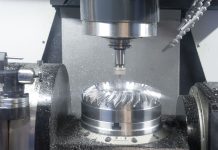Sand casting is an ancient and widely used form of manufacturing that involves forming metal casting parts by pouring molten metal into a sand mold. Here’s a closer look at the process and the science behind it:
1. Creation of the Mold
The sand used in casting must be able to withstand high temperatures, so it often contains a mixture of silica sand, clay, and water. This mixture is compacted around a pattern, which is a replica of the object to be cast. The pattern is then removed, leaving a cavity in the shape of the part.
2. Pouring the Molten Metal
Once the mold is ready, molten metal is poured into the cavity. The metal can be iron, steel, aluminum, bronze, or other alloys, depending on the desired properties of the final part. The metal needs to be heated to a specific temperature to ensure it flows evenly into all areas of the mold.
3. Cooling and Solidification
After the metal is poured, it begins to cool and solidify. The rate of cooling can affect the properties of the metal, such as its strength and hardness. Slow cooling generally allows for the formation of larger crystals, making the metal more malleable, whereas rapid cooling results in smaller crystals, increasing hardness.
4. Breaking Open the Mold
Once the metal has fully solidified, the sand mold is broken away. This is usually a destructive process, meaning the mold cannot be reused. The rough part that emerges is called the casting.
5. Finishing
The casting often requires various finishing processes, such as grinding, sanding, or machining, to achieve the precise dimensions and surface finish required for the part.
Science Involved
The science behind sand casting involves understanding the thermal properties of the mold and the metal, as well as the fluid dynamics of molten metal. The design of the mold must also consider the shrinkage that occurs as metal cools and solidifies. Advanced techniques, such as computer simulations, are often used to predict how the molten metal will flow and solidify, helping to minimize defects in the final product.
Sand casting is favored for its low cost and ability to produce large and complex parts, although it generally does not achieve the precision or surface finish of other manufacturing processes like machining or investment casting. It remains crucial in industries such as automotive, aerospace, and construction, where large, rugged parts are required












